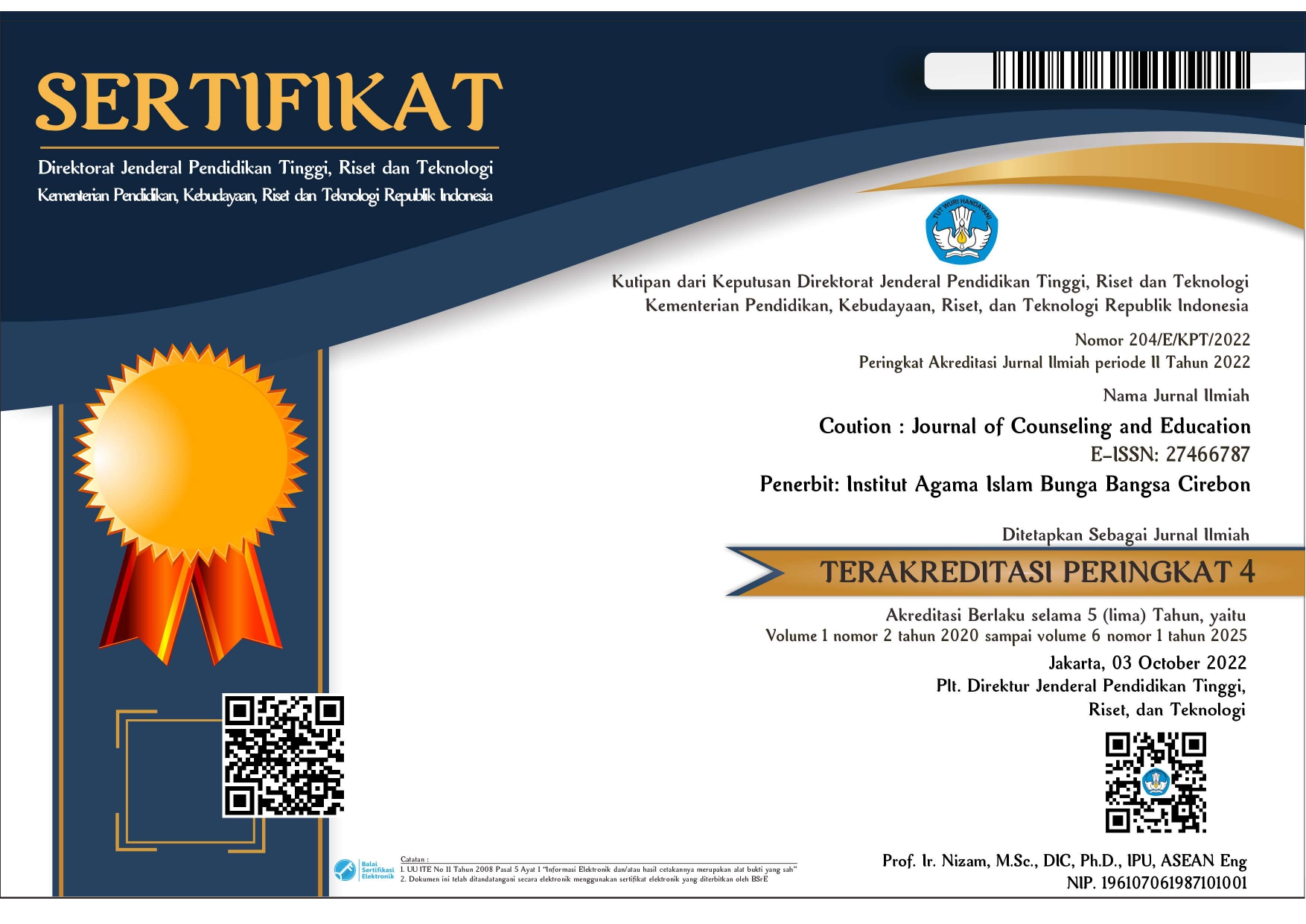Factors Of Non-English Foreign Language (EFL) Lecturers’ Speaking Anxiety In Teaching Bilingual Classes
Abstract
This research is a qualitative descriptive study that aims to reveal the phenomenon of anxiety faced by STAI Syekh H. Abdul Halim Hasan Al-Ishlahiyah Binjai lecturers in speaking English, especially in teaching and learning activities in bilingual classes. Total from ten lecturers filled out The Foreign Language Classroom Anxiety Scale (FLCAS) questionnaire adapted and modified from Horwitz, Horwitz, and Cope (1986), and Sari (2017) used to obtain valid data about what anxiety factors dominate and influence lecturers are reluctant to use English in teaching in bilingual classes. The data shows that communication apprehension factors dominantly and most influences the anxiety faced by the lecturers in speaking English with an average percentage of 56%. In second place is occupied by Fear of negative evaluation factors with average percentage of 53%, followed by test anxiety factors with 48%. Lecturers are expected to be able to regulate and limit the space for the factors that influence them to speak English so that the teaching and learning processes in bilingual classes are not disrupted.
Downloads
References
Horwitz, E. K., Horwitz, M. B., & Cope, J. (1986). Foreign language classroom anxiety. The Modern Language Journal, 70(2), 125–132.
Jalleh, C. M., Mahfoodh, O. H. A., & Singh, M. K. M. (2021). Oral Communication Apprehension among Japanese EFL International Students in a Language Immersion Program in Malaysia. International Journal of Instruction, 14(2), 155–178.
MacIntyre, P. D., & Gardner, R. C. (1989). Anxiety and second?language learning: Toward a theoretical clarification. Language Learning, 39(2), 251–275.
Malik, S., Qin, H., & Oteir, I. (2021). Perceived Psychological, Linguistic and Socio-Cultural Obstacles: An Investigation of English Communication Apprehension in EFL Learners. International Journal of Instruction, 14(4), 733–752.
Mayer, D. P. (2008). Overcoming school anxiety: how to help your child deal with separation, tests, homework, bullies, math phobia, and other worries. AMACOM Div American Mgmt Assn.
McCroskey, J. C. (1980). Quiet children in the classroom: On helping not hurting.
Miles, M. B., & Huberman, A. M. (1994). Qualitative data analysis: An expanded sourcebook. sage.
Riyanti, R., Supono, S., & Santoso, L. (2020). http://repository. lppm. unila. ac. id/id/eprint/32210.
Sari, D. (2017). Speaking anxiety as a factor in studying EFL. English Education Journal, 8(2), 177–186.
Scovel, T. (1978). The effect of affect on foreign language learning: A review of the anxiety research. Language Learning, 28(1), 129–142.
Watson, D., & Friend, R. (1969). Measurement of social-evaluative anxiety. Journal of Consulting and Clinical Psychology, 33(4), 448.


















